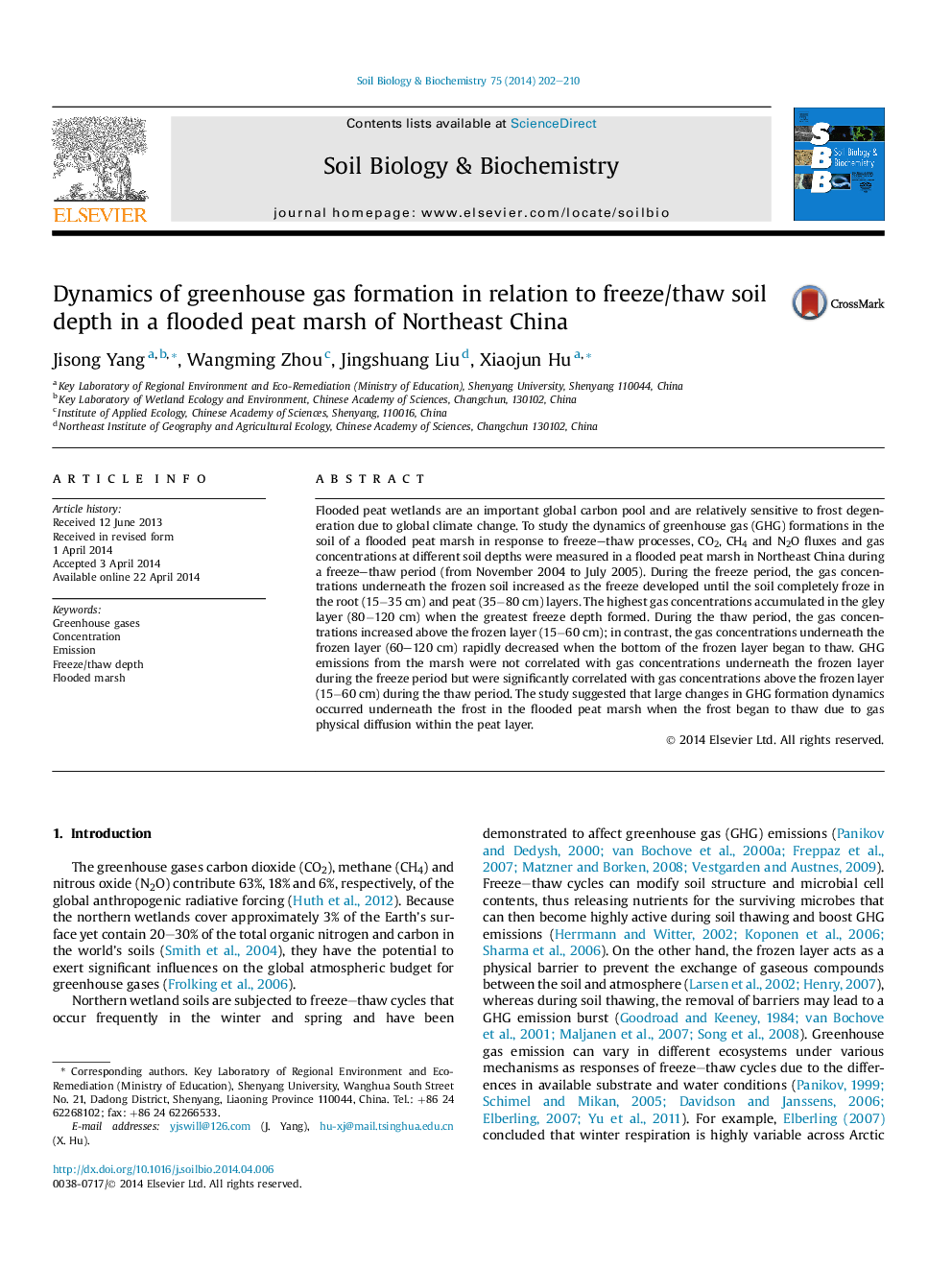| Article ID | Journal | Published Year | Pages | File Type |
|---|---|---|---|---|
| 8364741 | Soil Biology and Biochemistry | 2014 | 9 Pages |
Abstract
Flooded peat wetlands are an important global carbon pool and are relatively sensitive to frost degeneration due to global climate change. To study the dynamics of greenhouse gas (GHG) formations in the soil of a flooded peat marsh in response to freeze-thaw processes, CO2, CH4 and N2O fluxes and gas concentrations at different soil depths were measured in a flooded peat marsh in Northeast China during a freeze-thaw period (from November 2004 to July 2005). During the freeze period, the gas concentrations underneath the frozen soil increased as the freeze developed until the soil completely froze in the root (15â35Â cm) and peat (35â80Â cm) layers. The highest gas concentrations accumulated in the gley layer (80â120Â cm) when the greatest freeze depth formed. During the thaw period, the gas concentrations increased above the frozen layer (15â60Â cm); in contrast, the gas concentrations underneath the frozen layer (60-120Â cm) rapidly decreased when the bottom of the frozen layer began to thaw. GHG emissions from the marsh were not correlated with gas concentrations underneath the frozen layer during the freeze period but were significantly correlated with gas concentrations above the frozen layer (15â60Â cm) during the thaw period. The study suggested that large changes in GHG formation dynamics occurred underneath the frost in the flooded peat marsh when the frost began to thaw due to gas physical diffusion within the peat layer.
Related Topics
Life Sciences
Agricultural and Biological Sciences
Soil Science
Authors
Jisong Yang, Wangming Zhou, Jingshuang Liu, Xiaojun Hu,
